Ribavirin-resistant variants of foot-and-mouth disease virus: the effect of restricted quasispecies diversity on viral virulence
- PMID: 24453363
- PMCID: PMC3993757
- DOI: 10.1128/JVI.03594-13
Ribavirin-resistant variants of foot-and-mouth disease virus: the effect of restricted quasispecies diversity on viral virulence
Abstract
Mutagenic nucleoside analogues can be used to isolate RNA virus high-fidelity RNA-dependent RNA polymerase (RdRp) variants, the majority of which are attenuated in vivo. However, attenuated foot-and-mouth disease virus (FMDV) high-fidelity RdRp variants have not been isolated, and the correlations between RdRp fidelity and virulence remain unclear. Here, the mutagen ribavirin was used to select a ribavirin-resistant population of FMDV, and 4 amino acid substitutions (D5N, A38V, M194I, and M296V) were identified in the RdRp-coding region of the population. Through single or combined mutagenesis using a reverse genetics system, we generated direct experimental evidence that the rescued D5N, A38V, and DAMM mutants but not the M194I and M296V mutants are high-fidelity RdRp variants. Mutagen resistance assays revealed that the higher replication fidelity was associated with higher-level resistance to ribavirin. In addition, significantly attenuated fitness and virulence phenotypes were observed for the D5N, A38V, and DAMM mutants. Based on a systematic quantitative analysis of fidelity and virulence, we concluded that higher replication fidelity is associated with a more attenuated virus. These data suggest that the resulting restricted quasispecies diversity compromises the adaptability and virulence of an RNA virus population. The modulation of replication fidelity to attenuate virulence may represent a general strategy for the rational design of new types of live, attenuated vaccine strains.
Importance: The ribavirin-isolated poliovirus (PV) RdRp G64S variant, the polymerases of which were of high replication fidelity, was attenuated in vivo. It has been proposed (M. Vignuzzi, E. Wendt, and R. Andino, Nat. Med. 14:154-161, http://dx.doi.org/10.1038/nm1726) that modulation of replication fidelity is a promising approach for engineering attenuated virus vaccines. The subsequently mutagen-isolated RdRp variants also expressed the high-fidelity polymerase, but not all of them were attenuated. Few studies have shown the exact correlation between fidelity and virulence. The present study investigates the effect of restricted quasispecies diversity on viral virulence via several attenuated FMDV high-fidelity RdRp variants. Our findings may aid in the rational design of a new type of vaccine strain.
Figures
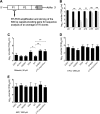
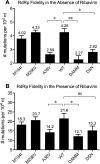
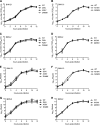
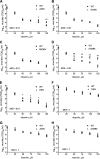

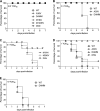


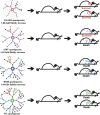
Similar articles
-
Foot-and-mouth disease virus low-fidelity polymerase mutants are attenuated.Arch Virol. 2014 Oct;159(10):2641-50. doi: 10.1007/s00705-014-2126-z. Epub 2014 Jun 3. Arch Virol. 2014. PMID: 24888311
-
Foot-and-mouth disease virus type O specific mutations determine RNA-dependent RNA polymerase fidelity and virus attenuation.Virology. 2018 May;518:87-94. doi: 10.1016/j.virol.2018.01.030. Epub 2018 Feb 20. Virology. 2018. PMID: 29455065 Free PMC article.
-
Attenuation of Foot-and-Mouth Disease Virus by Engineered Viral Polymerase Fidelity.J Virol. 2017 Jul 12;91(15):e00081-17. doi: 10.1128/JVI.00081-17. Print 2017 Aug 1. J Virol. 2017. PMID: 28515297 Free PMC article.
-
Ribavirin and lethal mutagenesis of poliovirus: molecular mechanisms, resistance and biological implications.Virus Res. 2005 Feb;107(2):173-81. doi: 10.1016/j.virusres.2004.11.007. Virus Res. 2005. PMID: 15649563 Review.
-
5-fluorouracil in lethal mutagenesis of foot-and-mouth disease virus.Future Med Chem. 2009 Jun;1(3):529-39. doi: 10.4155/fmc.09.26. Future Med Chem. 2009. PMID: 21426129 Review.
Cited by
-
Genetic diversity through social heterosis can increase virulence in RNA viral infections and cancer progression.R Soc Open Sci. 2021 May 5;8(5):202219. doi: 10.1098/rsos.202219. R Soc Open Sci. 2021. PMID: 34035948 Free PMC article.
-
Sequence-Specific Fidelity Alterations Associated with West Nile Virus Attenuation in Mosquitoes.PLoS Pathog. 2015 Jun 26;11(6):e1005009. doi: 10.1371/journal.ppat.1005009. eCollection 2015 Jun. PLoS Pathog. 2015. PMID: 26114757 Free PMC article.
-
Tyr82 Amino Acid Mutation in PB1 Polymerase Induces an Influenza Virus Mutator Phenotype.J Virol. 2019 Oct 29;93(22):e00834-19. doi: 10.1128/JVI.00834-19. Print 2019 Nov 15. J Virol. 2019. PMID: 31462570 Free PMC article.
-
RNA-Dependent RNA Polymerase of the Second Human Pegivirus Exhibits a High-Fidelity Feature.Microbiol Spectr. 2022 Oct 26;10(5):e0272922. doi: 10.1128/spectrum.02729-22. Epub 2022 Aug 18. Microbiol Spectr. 2022. PMID: 35980196 Free PMC article.
-
The evolution of a super-swarm of foot-and-mouth disease virus in cattle.PLoS One. 2019 Apr 25;14(4):e0210847. doi: 10.1371/journal.pone.0210847. eCollection 2019. PLoS One. 2019. PMID: 31022193 Free PMC article.
References
-
- Melo EC, Saraiva V, Astudillo V. 2002. Review of the status of foot and mouth disease in countries of South America and approaches to control and eradication. Rev. Sci. Tech. 21:429–436 http://bvs1.panaftosa.org.br/local/file/textoc/CorreaReview2002.pdf - PubMed
Publication types
MeSH terms
Substances
LinkOut - more resources
Full Text Sources
Other Literature Sources
Research Materials

